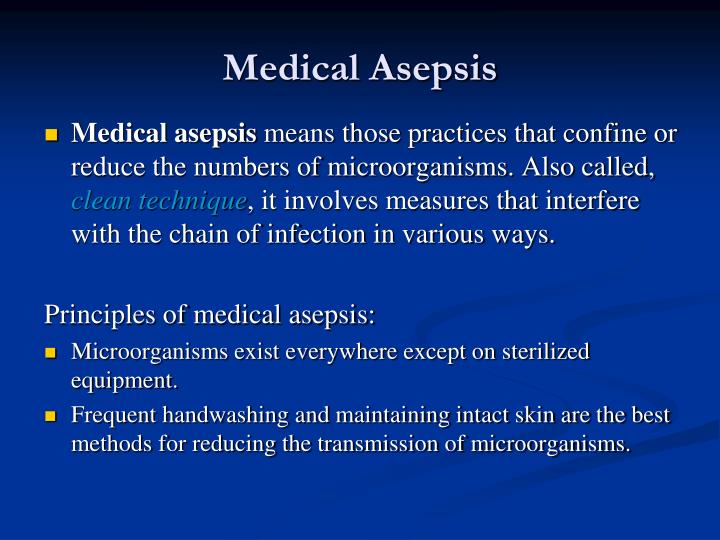
Correctly cleaning, disinfecting or sterilizing articles before use.Portal of exit: the means in which the pathogen escapes from the reservoir and can cause disease there is usually a common escape route for each type of microorganism on humans, common escape routes are the gastrointestinal, respiratory and the genitourinary tract.Īsepsis and Infection Control Breaking the Chain of Infection Etiologic agent.Reservoir: the environment in which the microorganism lives to ensure survival it can be a person, animal, arthropod, plant, oil or a combination of these things reservoirs that support organism that are pathogenic to humans are inanimate objects food and water, and other humans.Portal of entry: the means of a pathogen entering a host: the means of entry can be the same as one that is the portal of exit (gastrointestinal, respiratory, genitourinary tract).Susceptible host describes a host (human or animal) not possessing enough resistance against a particular pathogen to prevent disease or infection from occurring when exposed to the pathogen in humans this may occur if the person’s resistance is low because of poor nutrition, lack of exercise of a coexisting illness that weakens the host.Modes of transmission: the microorganism must have a means of transmission to get from one location to another, called direct and indirect.Infectious agent microorganisms capable of causing infections are referred to as an infectious agent or pathogen.

Basic to the principle of infection is to interrupt this chain so that an infection from a microorganism does not occur in client.The chain of infection refers to those elements that must be present to cause an infection from a microorganism.Identification and management of clients at risk.Interventions to Reduce Risk for Infection Impaired Social Interaction or Social Isolation.Imbalanced Nutrition: Less than Body Requirement.Potential Complication of Infection: Fever.State in which an individual is at increased risk for being invaded by pathogenic microorganisms.Moist mucous membranes and cilia of the nasal passages.Virulence and potency of the microorganisms (pathogenicity)Īnatomic and Physiologic Barriers Defend Against Infection.Enlargement and tenderness of lymph nodes that drain the area of infectionįactors Influencing Microorganism’s Capability to Produce Infection.Anorexia and, in some situations, nausea and vomiting.Increased pulse and respiratory rate if the fever high.Loss of function of the body part affected, depending on the site and extent of involvement.Pain or tenderness with palpation or movement.Conscientiousness, alertness and honesty are essential qualities in maintaining surgical asepsis.
#EXAMPLES OF MEDICAL AND SURGICAL ASEPSIS SKIN#
The skin cannot be sterilized and is unsterile.The edges of a sterile field are considered unsterile.Moisture that passes through a sterile object draws microorganism from unsterile surfaces above or below to the surface by capillary reaction.Fluids flow in the direction of gravity.


Principles of Aseptic Technique Only sterile items are used within sterile field. Used for all procedures involving sterile areas of the body.

#EXAMPLES OF MEDICAL AND SURGICAL ASEPSIS FREE#


 0 kommentar(er)
0 kommentar(er)
